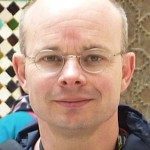Link to Pubmed [PMID] – 27893151
Clin. Genet. 2017 02;91(2):143-156
Human sex determination (SD) involves complex mutually antagonistic genetic interactions of testis- and ovary-determining pathways. For many years, both male and female SD were considered to be regulated by a linear cascade of pro-male and pro-female genes, respectively; however, it has become clear that male and female development is achieved through the repression of the alternative state. A gene determining the formation of a testis may function by repressing the female state and vice versa. Uniquely in development, SD is achieved by suppression of the alternate fate and maintained in adulthood by a mutually antagonistic double-repressive pathway. Here, we review genetic data generated through large-scale sequencing approaches that are changing our view of how this system works, including the recently described recurrent NR5A1 p.R92W mutation associated with testis development in 46,XX children. We also review some of the unique challenges in the field to establish that mutations, such as this are pathogenic. The impending surge of new genetic data on human SD from sequencing projects will create opportunities for the development of mechanistic models that will clarify how the system operates and importantly provide data to understand how selection and developmental processes interact to direct the evolution of SD across species.


